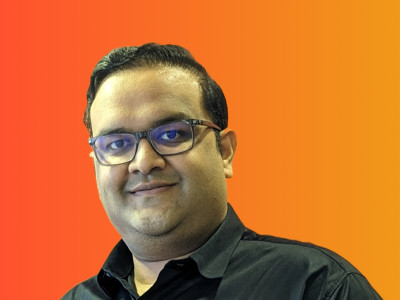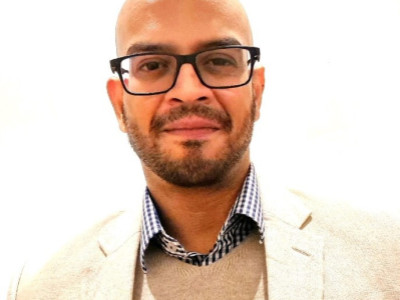How Physicians evolved into Digital Doctors during the COVID 19
An interesting POV by Monica Gangwani, Country Leader and Executive Director, Healthcare, Ipsos India.
As the country celebrates National Doctor’s Day on July 1st, it is an opportune time to understand the impact of COVID19 on the doctor’s practices and consultations. Doctors who are one of the key stakeholders of the healthcare industry have had a tough time navigating through the pandemic. There are some specific key trends that have emerged and they could be here for the long haul, even when everything will be back to what is being called ‘the new normal’. We have seen wide adoption of teleconsultation and telemedicine by doctors in treating patients during this difficult period, with 52% of all consultations being remote/ tele-consultation, significantly higher than those happening pre-COVID19 at 25% (based on Ipsos COVID19 Impact Study on Physician Practice).
Indian Healthcare Infrastructure highly ill-prepared to deal with pandemics
Before we assess the adoption of tele-health as a result of the COVID 19 pandemic, a look at India’s healthcare infrastructure will be revealing. Broadly, Healthcare in India has faced decades of neglect that have left India’s health system with a very weak arsenal to fight and eliminate diseases. The economy is ill-equipped to bear the burden of India’s burgeoning population, even in terms of basic infrastructure. The OECD data shows an abysmal 1 hospital bed per 2000 population in India and 1 practicing doctor for 1250 population. In fact, if we look at India’s health spending, it is a mere 3.7% of the GDP, which is among the lowest in the world, with preventive healthcare being relegated to an even lower priority. Of this 3.7% spending, private sector accounts for 76% of the pie, while the govt contribution is a paltry 24%.
India’s overburdened health infrastructure was in no way prepared to handle a pandemic of the scale of COVID 19! Since its outbreak in India in early 2020 which resulted in the world’s biggest lockdown starting 25th March, the Govt and healthcare industry took several measures to counter the situation:
COVID19 has compounded problems for doctors and patients alike!
Despite the lockdown and the restrictions, COVID 19 spread its tentacles rather fast and healthcare professionals being frontline workers bore the brunt of this disease in a rather severe way. Ipsos analyzed some of the key qualitative inputs through physician posts on COVID 19, accessed from G-MED’s Global Physician Forum. Physicians highlighted a number of issues surfacing due to COVID19: there were concerns due to reduced face-to-face patient, some felt overwhelmed with the sheer quantity of information, some spoke of unsafe working conditions (non-availability of PPE suits and other safety gear) that led them going to hospitals/ clinics with a deep sense of fearfulness.
Further, doctors felt highly constrained in treating patients, especially the more vulnerable groups like the elderly who needed most care and those suffering from chronic illnesses. Then there were prescription supply issues, with medicines prescribed for COVID 19 being in short supply. Doctors also felt there were appointments and treatment delays due to patients’ reluctance to enter hospitals and there were new hospital protocols with respect to visits. Non COVID19 patients were reluctant to come to hospitals due to fear of contracting the virus and resultantly non COVID 19 cardiovascular and cancer patients saw higher mortality rates. There was anxiety among patients of unknown consequences and mental health issues of those in solitary confinement went up.
Telehealth a boon during COVID 19
COVID 19 has not just necessitated but also expedited the shift to telehealth and telemedicine and increased its uptake. Physicians on G-MED community talked about using telehealth to remotely monitor patients with existing chronic conditions, those under new treatment and to monitor COVID19 patients.
During the lockdown phase on March 25th, the Indian Government published the Telemedicine Practice Guidelines and legitimized the use of teleconsultation by registered medical practitioners. Physicians are now increasingly adopting third party platforms to conduct tele-consultations. Healthcare technology companies have also played a key role by offering easy to use platforms for appointments, consultation, prescriptions, fees collection and even supply of medicines and diagnostic tests for patients. There are now sophisticated softwares to read images by providers and there is a growing interest in noise cancelling headphones or microphones to aid in better quality of consultations.
Barriers too in terms of cost, time, resource availability, technology, reimbursement were seen to be less of a hindrance, as most countries were seen to be moving to telehealth.
Challenges of Telehealth
It was a mixed bag when we looked at the physicians’ ability of leveraging telehealth. There were a large number of physicians who felt ill equipped about telehealth because of fear of medico-legal implications, patient data privacy concerns, lack of experience and training. Technology platform barriers were felt by physicians for specialist platforms run by 3rd party service providers for virtual health offerings. Collection of fees using a virtual platform was also a real challenge voiced. Physicians perceived that patients too had their own challenges with technology and comfort levels with telehealth, due to lack of experience and access to remote monitoring equipment at home.
Remote consultations are here to stay!
All the challenges notwithstanding, doctors have seen merits of telehealth during the pandemic. It has proved to be a reliable method to treat and monitor patients, especially the elderly, the follow up and controlled patient groups (not requiring major changes in therapy). Interestingly, physicians did not hold this shift to virtual as something temporary or knee jerk in response to the pandemic. In fact, 75% of the physicians on the GMED community talked about doing more virtual consultations in the future, even post pandemic. Thus it looks like this change in practice dynamics is here to stay!



















Share
Facebook
YouTube
Tweet
Twitter
LinkedIn